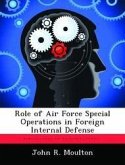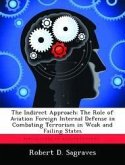The Global War on Terrorism has forced the United States (US) to closely evaluate its role as the post Cold War hegemon. This evaluation has led President Bush, in the 2002 National Security Strategy of the United States of America, to commit the nation to actively build the internal security capability of our allies. This thesis will assess how aviation Foreign Internal Defense (FID) fits into this US national security goal, ultimately addressing the question: Is the USAF Foreign Internal Defense force structure appropriate for the War on Terrorism? This study begins by documenting changes in the international security environment and the effects of the War on Terror, on the United State's commitment to FID operations. After laying this foundation, the discussion will focus on USAF FID, both its history and current force structure. During the Cold War, fighting and winning major theater warfare drove the USAF to create a force focused on gaining air superiority, destroying enemy armored formations, and conducting strategic attack.








